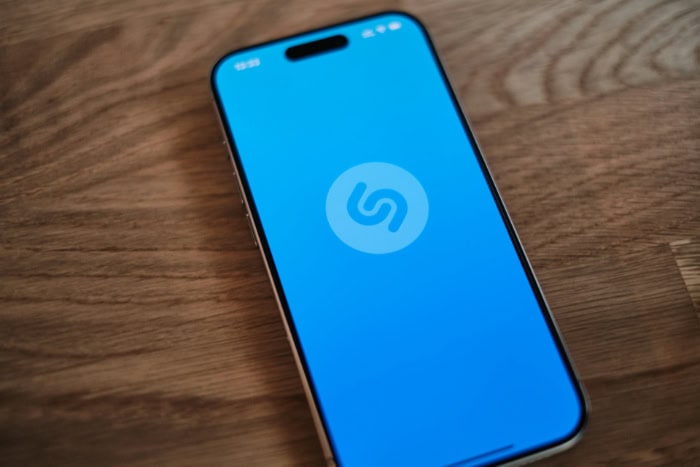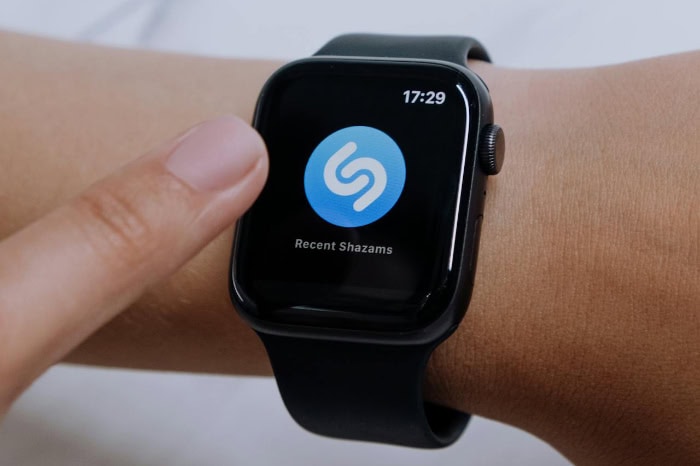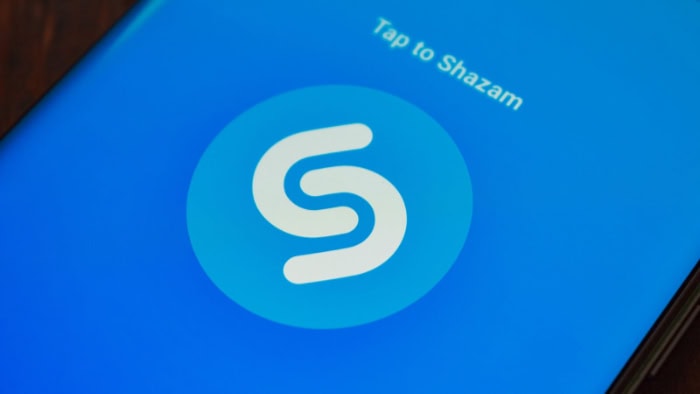How Does Shazam Work? Inside Its Genius Song-Matching Tech

Have you ever heard a song playing in a café, on the radio, or during a movie and wondered what it was? For moments like these, Shazam has become a go-to solution, capable of identifying songs in seconds.
It’s more than just a convenience—it’s a fascinating blend of innovation and practicality that has changed how we engage with music.
Behind Shazam’s simplicity lies a complex system that listens to a snippet of sound, processes it, and matches it against an enormous library of songs with incredible precision. While it feels effortless to the user, the app’s functionality is powered by sophisticated algorithms and a continuously growing database.
The Core Technology Behind Shazam
Shazam’s ability to identify songs within seconds might feel like magic, but it’s built on a foundation of advanced technology. The app transforms sound into a digital format that computers can analyze, compare, and match with incredible speed.
To achieve this, Shazam relies on three key components: audio fingerprinting, spectrograms, and combinatorial hashing. Each of these technologies plays a vital role in ensuring the app’s efficiency and accuracy.
Audio Fingerprinting
Audio fingerprinting is the foundation of Shazam’s song recognition process. When sound is captured, it is converted into a unique digital representation, or “fingerprint,” that encapsulates the most distinguishing features of the audio.
These fingerprints are not direct recordings of the sound but rather abstract representations that focus on the unique characteristics of the audio, such as the pitch, rhythm, and timing of the notes.
The process begins with breaking down the audio sample into small segments. These segments are analyzed for patterns that make the audio stand out, such as prominent peaks in its frequency spectrum.
These peaks are essentially high-intensity points in the sound that can be reliably extracted even in noisy environments. By focusing on these peaks, Shazam ensures that the fingerprints are compact yet highly distinctive, making them easier to compare against its massive database.
Audio fingerprinting allows Shazam to identify songs quickly and accurately without needing to store massive amounts of raw sound data. Instead, it works with condensed digital signatures that encapsulate the essence of the song, making the recognition process efficient.
Spectrograms
To create these fingerprints, Shazam relies on a tool called a spectrogram. A spectrogram is a visual representation of sound that maps its frequency, intensity, and time on a graph.
It essentially transforms audio into a heatmap where the x-axis represents time, the y-axis represents frequency, and the color or brightness indicates the intensity of specific frequencies over time.
The spectrogram is crucial because it allows Shazam to isolate the unique audio features that define a song.
For example, a drumbeat might produce a distinct low-frequency pattern, while a high-pitched vocal note creates a peak in the higher frequencies.
By identifying these patterns, Shazam can create a “fingerprint” that highlights the song’s most recognizable components.
This method is especially effective because it reduces the influence of background noise. Even in noisy environments, the spectrogram focuses on the dominant audio features that are most likely to match the original recording in Shazam’s database.
This ensures that the app can deliver accurate results even when the audio sample is less than perfect.
Combinatorial Hashing
Once Shazam has extracted the audio fingerprint, the next challenge is finding a match in its vast database. This is where combinatorial hashing comes into play.
Hashing is a technique used to convert data into a fixed-size string of characters, known as a hash. In the context of Shazam, hashing is used to create unique identifiers for each audio fingerprint.
Combinatorial hashing speeds up the search process by organizing these hashes in a way that allows for quick comparisons. Instead of scanning through the entire database, Shazam uses the hash to narrow down the potential matches to a small subset of entries.
This significantly reduces the time required to find the correct song.
The process works by dividing the audio fingerprint into smaller components and assigning each component a hash value. These hash values are then combined to create a unique identifier for the entire fingerprint.
When a user submits a sample, Shazam generates a fingerprint and its corresponding hash, then searches for a match in the database using this hash.
This approach not only makes the system faster but also increases its accuracy. Even if the audio sample is incomplete or slightly distorted, the combinatorial hashing process can still identify the correct song by focusing on the most reliable parts of the fingerprint.
How Shazam Identifies Songs

Shazam’s ability to recognize songs in mere seconds is not just a technological marvel but also a carefully orchestrated process that happens in the blink of an eye.
From capturing the sound around the user to matching it with a vast catalog of music, each step is designed to ensure speed and accuracy.
This process relies on a combination of precise audio analysis, efficient database searching, and robust algorithms to handle even the most challenging scenarios.
Audio Capture and Preprocessing
The process begins the moment you tap the Shazam button. The app listens to a short snippet of audio from the environment, typically lasting around 10 seconds.
This brief recording serves as the raw material for the entire recognition process, but capturing sound in real-world conditions is not always straightforward.
Background noise, overlapping conversations, or environmental disturbances can easily interfere with the clarity of the recording.
To address this, Shazam employs a series of preprocessing techniques to clean up the audio and enhance its quality.
Noise reduction is one of the first steps in preprocessing. By filtering out irrelevant background sounds, the app isolates the music from other environmental noise.
This is achieved by focusing on the dominant frequencies and patterns likely to belong to the song itself.
For example, if a song’s bassline and vocals are prominent, the app ensures these elements stand out while minimizing the influence of less relevant sounds like talking or clinking glasses.
Once the audio is cleaned and enhanced, it is broken down into smaller chunks for further analysis. These chunks are then converted into the digital fingerprints that represent the unique characteristics of the song, preparing the sample for the next stage: database matching.
Database Matching Process
After generating the audio fingerprint, Shazam moves on to the core of its functionality—comparing the fingerprint to its extensive music database.
This database contains millions of pre-processed fingerprints representing songs from every genre, language, and era.
The vastness of the database is what allows Shazam to work with such versatility, but searching through it efficiently requires specialized algorithms.
The app uses hashing techniques to quickly narrow down the potential matches. By organizing the fingerprints into a structured format, Shazam can pinpoint the correct match without scanning every entry in the database.
Instead, it focuses on specific clusters of fingerprints that are most likely to match the submitted sample. This method drastically reduces the time needed to identify a song, often delivering results in less than five seconds.
What makes this process even more impressive is its accuracy. Even when the audio sample is short or partially obscured, Shazam’s algorithms are designed to focus on the most distinctive parts of the fingerprint.
These might include unique combinations of notes, rhythms, or instrumental features that stand out from other songs.
Building and Maintaining the Song Database

Shazam’s ability to identify millions of songs with such precision relies heavily on its extensive and meticulously curated song database. This database acts as the backbone of the app, housing the digital fingerprints of songs from around the world.
Developing and maintaining such a vast collection requires collaboration with the music industry, as well as ongoing efforts to adapt to the changing dynamics of global music trends.
Database Composition
The scale of Shazam’s song database is immense, encompassing millions of tracks spanning every genre, language, and era. This vast collection is what enables the app to recognize everything from chart-topping hits to obscure tracks from independent artists.
Each song in the database is processed to create its unique audio fingerprint, which is then stored for matching purposes.
The primary sources for populating this database include partnerships with record labels, music distributors, and digital platforms. Record labels play a critical role in providing high-quality, studio-recorded material that forms the foundation of Shazam’s library.
These partnerships ensure that new songs are added promptly, often before they are widely released to the public.
In addition to formal partnerships, Shazam also benefits from user uploads. Independent artists and smaller labels can contribute their music directly to the platform, ensuring that their work is accessible to listeners worldwide.
This inclusive approach broadens the scope of the database, making it a valuable resource for fans of all types of music.
Updating and Expanding the Database
The music industry is constantly evolving, with new songs, remixes, and genres emerging daily. To stay relevant, Shazam must continuously update and expand its database.
This involves not only adding new releases but also ensuring that older tracks remain available for recognition. The process requires a dedicated team and advanced automation to keep the database current and comprehensive.
One of the app’s priorities is to ensure diversity in its offerings. This means including music from various regions, cultures, and languages to cater to a global audience.
For instance, while mainstream pop and rock might dominate in some markets, regional genres like K-pop, Afrobeats, or traditional folk music are equally important in others.
By incorporating a wide variety of music, Shazam enhances its ability to connect users with songs that resonate with their unique preferences.
Maintaining the accuracy of the database is another critical focus. As new versions of songs—such as remixes, live recordings, or acoustic performances—are released, they are added to the library with their own distinct fingerprints.
This ensures that the app can distinguish between different versions of the same song, providing users with precise matches.
Benefits for Users and Artists

Shazam’s appeal goes beyond its technological prowess—it offers practical advantages for both listeners and artists. For users, it provides a seamless way to connect with music, while for artists, it serves as a valuable platform for exposure and engagement.
These dual benefits make Shazam a unique tool in the music ecosystem, bridging the gap between creators and audiences.
For Users
Shazam has transformed the experience of music discovery by making it simple to recognize songs in a variety of environments. Whether a user hears a catchy tune on the radio, a compelling soundtrack in a movie, or background music in a café, the app can identify the song within seconds.
This quick and precise identification process saves users from the frustration of not knowing the name of a song or its artist.
Beyond identification, Shazam offers several features that enhance the listening experience. For instance, users can view synchronized lyrics, allowing them to sing along or better connect with the song’s meaning.
The app also provides personalized song recommendations based on previous searches, helping users broaden their musical tastes.
Another convenient feature is integration with popular streaming platforms like Spotify and Apple Music, which allows users to instantly add identified songs to their playlists.
These features not only make the app practical but also enrich the way users interact with music.
Additionally, Shazam’s ability to store past searches ensures that users can revisit songs they’ve identified, even if they didn’t save them immediately. This functionality adds a layer of convenience, ensuring no musical moment is lost.
For Artists
For musicians, Shazam is more than just a recognition tool—it is a platform for exposure. When a song is identified through the app, the artist gains visibility, often leading to increased streams, downloads, and fan engagement.
This is particularly beneficial for emerging or independent artists who may not have access to traditional promotional channels but can still reach listeners through Shazam.
One of the standout features for artists is Shazam’s chart system, which tracks the popularity of songs based on user searches. These charts provide insights into which tracks are resonating with audiences in specific regions or globally.
For artists, this data can be invaluable in shaping their promotional strategies or understanding where their music is gaining traction.
Shazam also serves as a tool for audience discovery. When a user identifies a song, they are often directed to the artist’s profile, where they can explore more music, view biographies, or find links to follow the artist on social media.
This increases the likelihood of turning casual listeners into dedicated fans.
Moreover, Shazam’s global reach ensures that artists can connect with listeners across different countries and cultures. This expanded visibility helps break down geographical barriers, offering musicians an opportunity to grow their audience far beyond their local communities.
Challenges and Limitations

While Shazam is a powerful tool that has transformed how we interact with music, it is not without its challenges. Certain technical and practical limitations occasionally impact its ability to deliver accurate results.
These constraints, ranging from issues with audio quality to gaps in its song database, highlight areas where the app’s performance can be affected.
Technical Limitations
One of the most significant challenges Shazam faces is its difficulty in identifying live performances or heavily modified versions of songs.
Live renditions often differ from their studio recordings in tempo, arrangement, and vocal delivery, which means the audio fingerprint created by the live version might not align with the one stored in Shazam’s database.
Similarly, remixes, mashups, or acoustic versions may deviate enough from the original track to make recognition difficult. In such cases, the app struggles to find a match, leading to failed identifications.
Another technical limitation lies in its reliance on the quality of the recorded audio sample. Shazam performs best when it has a clear and uninterrupted snippet of the song.
However, in real-world scenarios, the audio environment is rarely ideal. Background noise, overlapping conversations, or environmental interference can distort the recording, making it harder for the app to isolate the song’s unique features.
For example, identifying a track in a noisy restaurant or a crowded concert setting can be particularly challenging. Despite its noise reduction capabilities, Shazam’s accuracy is inherently tied to the clarity of the submitted sample.
Database Constraints
Shazam’s ability to recognize songs depends entirely on the strength and comprehensiveness of its database. While the app boasts an extensive library of millions of songs, it is impossible to include every track ever created.
This means that certain niche, independent, or regionally specific music may not be part of the database, leading to gaps in coverage.
For instance, a user attempting to identify a local folk song or an underground artist’s work may find that the app is unable to provide a match due to the song’s absence from the library.
Additionally, maintaining an up-to-date database is an ongoing challenge. The music industry is constantly producing new content, from singles to remixes and even viral internet tracks.
Shazam must continuously add these new releases to its database to ensure accurate recognition.
However, delays in updating the library can result in temporary gaps, especially for songs that gain popularity quickly or emerge from independent platforms without formal distribution.
These database constraints highlight the importance of partnerships with record labels, artists, and distributors.
While Shazam works tirelessly to keep its catalog as comprehensive as possible, the sheer volume of global music production means that some tracks may inevitably slip through the cracks.
Conclusion
Shazam has become a remarkable tool for connecting people with music, blending advanced technology with practical functionality. Its ability to capture and analyze sound, match it against a vast database, and deliver results within seconds showcases the power of modern audio recognition.
Beyond its technical achievements, Shazam enhances the user experience with features like lyrics, recommendations, and playlist integration while offering artists a platform for visibility and engagement.
Despite its strengths, the app faces challenges in certain areas, such as recognizing live performances or handling niche tracks that might not be in its database.
However, these limitations are a reflection of the complexity of music recognition and the dynamic nature of the music industry.
What Shazam truly exemplifies is the way technology can bridge the gap between fleeting moments of sound and deeper musical connections.
Its continued evolution ensures it remains a valuable resource for users and artists alike, enriching the way we experience and interact with music.


